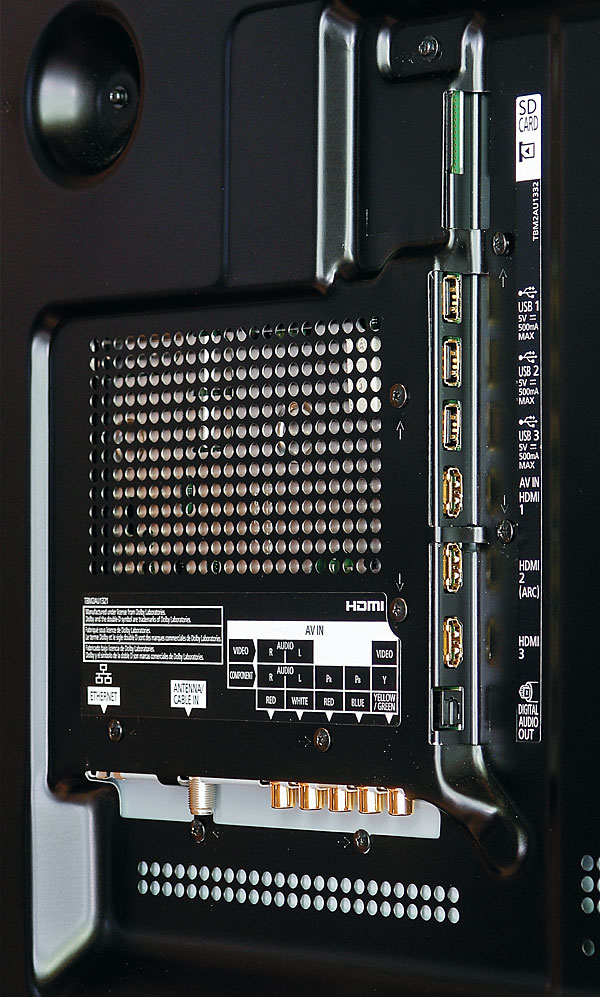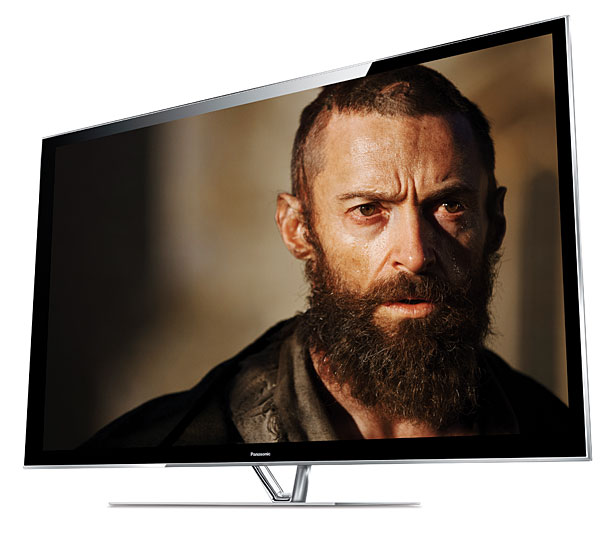Panasonic TC-P65ZT60 3D Plasma HDTV Page 2
With their Sharpness controls properly set (Pioneer on –15, Panasonic on 50), resolution differences between the sets, as with the color, were hard to spot. Unless there were problems in the source material, neither set ever looked either soft or unnaturally detailed. But I did note, and liked, the Panasonic’s subtly crisper images.
The panels on both sets do produce a low level buzz, together with some fan noise, which may annoy some viewers in certain situations. But for me these noises were inconsequential and in any case were masked by the sound from the source.

Pioneer Kuros have been criticized in some quarters for coming out of black a bit too slowly, resulting in crushed shadow detail. That may be true depending on your viewpoint, but it may well be a part of the Kuro’s inky-black secret sauce. Panasonic has argued in the past that its near-blacks may be a little lighter but that this better satisfies the need for good shadow detail.
With the sets matched as closely as possible with test patterns, particularly at the dark end of the brightness scale (difficult to do as the Panasonic appears to come out of black a bit sooner than the Pioneer), I pulled out two of my favorite black level and shadow detail torture discs, Harry Potter and the Deathly Hallows: Part 2 and Prometheus. Early on in the Potter film, Harry, Ron, and Hermione converse at the top of a dark stairwell (about 5:50 into the movie, chapter 2). Both sets did beautifully on this scene, but the Panasonic revealed just a little more shadow detail. Later, Harry and his friends travel to the dark, gloomy vaults at Gringotts Bank (beginning at the start of chapter 5). Both sets did equally well. Further along in chapter 9 (at 32:05), there’s a dark exterior shot of Hogwarts. The Panasonic offered noticeably more shadow detail here, without the blacks turning grayish. And at the beginning of chapter 12, there’s a panning shot around Voldemort and his minions. Most HDTVs fail so badly on this scene that they take you out of the film, but both the Panasonic and Pioneer sailed through it, with excellent shadow detail and no trace of fogginess. In a few other dark scenes, I thought I saw a little more depth in the Pioneer’s (2D) image, but this was elusive and would never be noticed short of a side-by-side comparison.
Moving on to Prometheus, the black background behind the ghost-like figure in the Scott Free logo preceding the film (0:53) was darker on the Panasonic. Ditto the star fields at 7:38 and 12:27. But this was very close. Most other comparisons on this disc, including the darkness in the alien caves, ended in virtual ties. Only on one scene did the Pioneer earn a marginal but visible win. In chapter 2 (7:24), there’s a shot of the female lead’s face in very low light. On both sets, the face was slightly washed out, but it did have a little more pop on the Pioneer.
Neither set goes totally black when portions of the image go to black. For now, that trick is exclusive to local-dimming LCDs with full-array (not edge) LED backlighting. But the Panasonic’s black bars on letterboxed movies are a little less conspicuous than on the Pioneer—though this was, again, very close.

It’s perhaps important to note that during this comparison, our sample of the Panasonic TC-65ZT60 had barely 150 hours on its clock, while the Pioneer Kuro PRO-141FD had four years of almost daily use behind it. With that considered, however, the bottom line is that this new Panasonic flagship can take a direct comparison to a Pioneer Kuro and come out, if not on top, at least very much on equal footing. And the Panasonic still had enough headroom for a slightly brighter picture if you need it (though not much more—super brightness is still an LCD show); the Pioneer in its preferred Pure mode was pretty much maxed out at the roughly 32 ft-L used in the comparisons.
Oh Yes, 3D
Plasmas are at a disadvantage in 3D relative to LCDs because of their inherently dimmer picture. With everything pushed to the wall—Contrast on 100, Panel brightness on High—the Panasonic’s peak brightness, post-calibration, measured just a shade over 5 ft-L. Compare that with the 3D brightness we’ve measured on some recent LCD designs—up to 24 ft-L in Sony’s latest 4K-resolution XBR model. This appears to be an inherent strength of LCD and an inherent weakness of plasmas.
That said, the Panasonic still produced good brightness in 3D. The 3D post-calibration color and resolution both measured and looked outstanding viewed through the glasses. Ghosting was less obvious than on many 3D sets.
The only bent arrow in the Panasonic’s 3D quiver was noticeable video noise, post calibration, on low-light-level test patterns in the High Panel brightness setting I needed to get the subjectively bright, punchy picture described earlier. This looked very bad on a 20-percent white window, but I never spotted it on real program material, including some of the darkest scenes in Avatar and Jack the Giant Slayer.
3D is becoming something of a commodity, but the TC-P65ZT60 produced the best 3D I’ve yet seen on a plasma display.
Conclusions
4K may be calling your name, but you have to consider the current dearth of true 4K sources and the probable need for a much bigger and more expensive screen to fully appreciate its benefits. 4K is also likely to be exclusively LCD, with that technology’s inherent weaknesses, for the foreseeable future. OLED is just coming to market, but with no guarantees about when we might see it at large screen sizes or affordable prices.
But the Panasonic TC-P65ZT60 is here now, and while it isn’t exactly a bargain-basement item, I can’t think of any currently available set of its size likely to produce a better picture on a 2K source. Absolutely recommended!









































